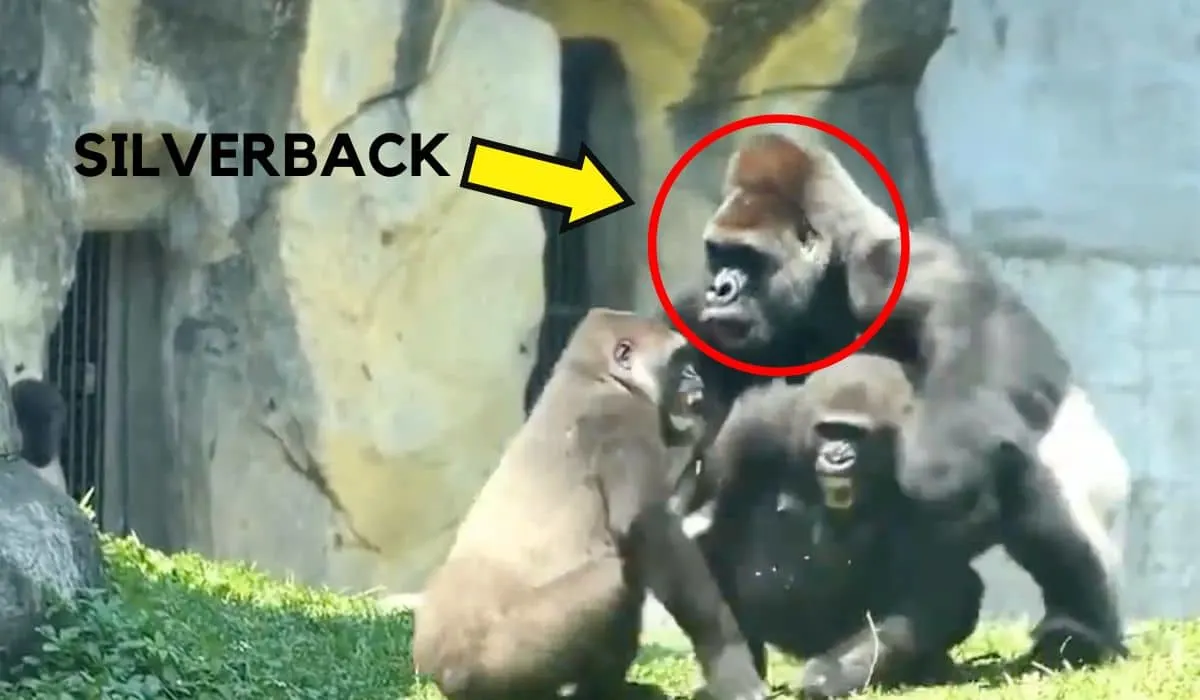A silverback gorilla intervenes in a fight between two of his flock members, illustrating how his leadership roles entail more than just protecting the troop from enemies.
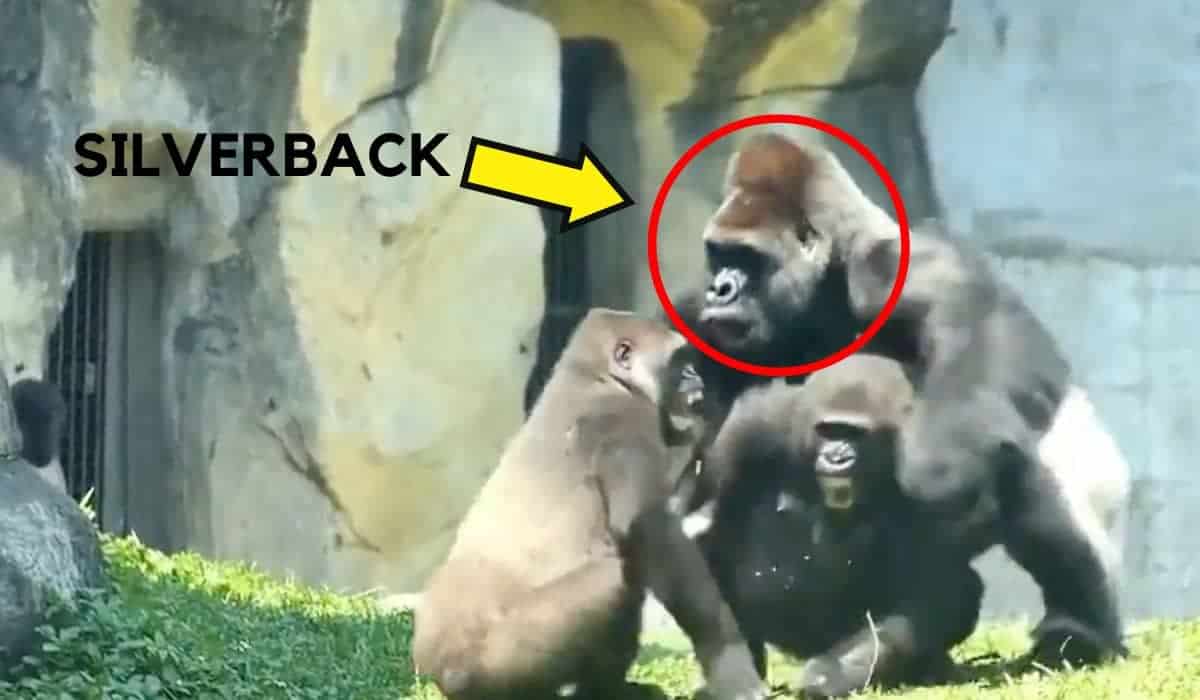
Gorillas, much like humans, live in communities known as troops, informed by complex social structures. At the helm of these troops is the Silverback, the dominant male gorilla, who carries a significant amount of responsibility.
Beyond the expected tasks of leading the troop’s movements and protecting it from external threats, the Silverback also plays a crucial role in maintaining the social harmony within the troop. This includes mediating disputes among troop members, a task that requires not just strength, but also a deep understanding of the group’s dynamics.
A striking example of this can be seen in footage from a Zoo in Taiwan. Here a Silverback gorilla named D’jeeco intervenes in a fight between two other gorillas.
In this article, we’ll take a closer look at the social structure of gorilla troops, especially the role of the Silverback. Lastly, we’ll also assess the different ways you can identify a silverback.
Key Points
- The video shows a silverback, D’jeeco, swiftly intervening in a fight between two gorillas.
- D’jeeco’s intervention highlights the silverback’s role in maintaining peace and teaching respect within the troop.
- Silverbacks are leaders, making decisions about troop movements and mediating disputes.
- Adult females are caretakers, nurturing and socializing the young. Blackbacks, younger males, serve as backup protection and potential suitors.
- Silverbacks can be identified by size, coloration, musculature, behavior, and mating rights.
Jump ahead to any section below:
Rules of the Jungle: The Social Structure of Gorilla Troops
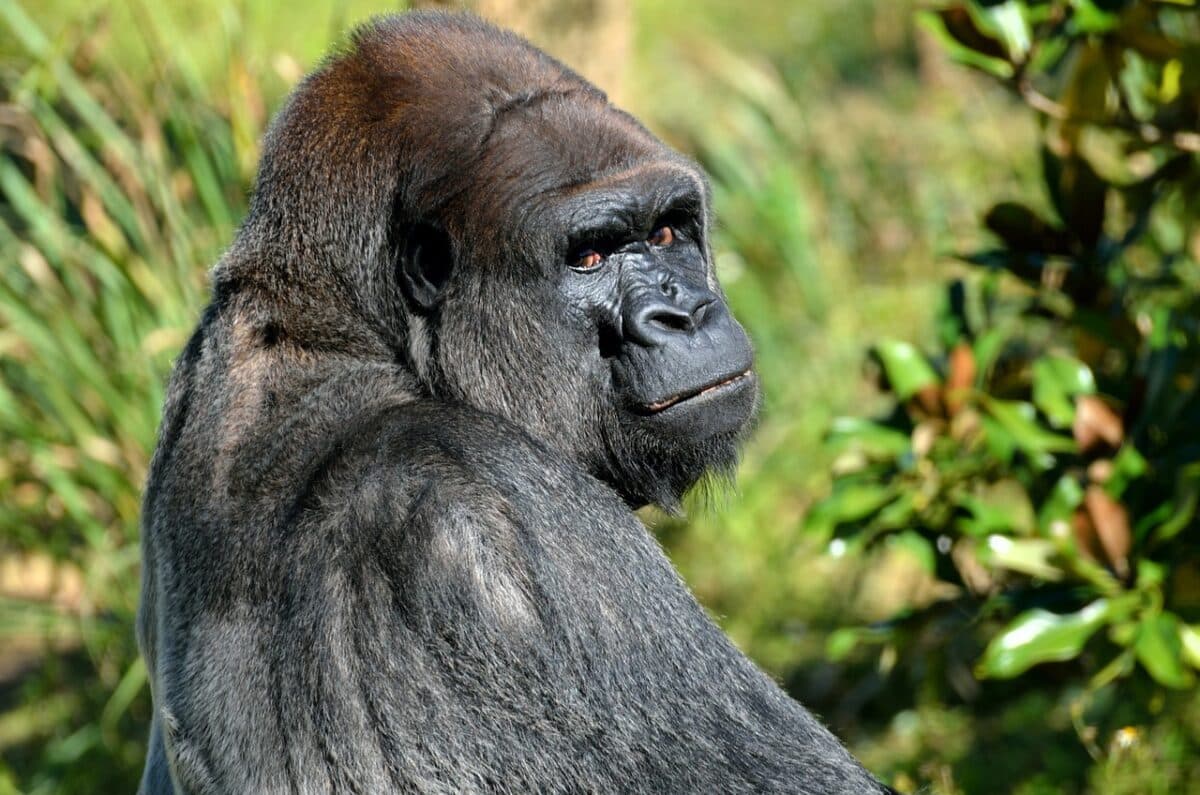
Before we take a closer look at the video of the silverback gorilla that intervened in the fight, we’re going to assess the structure of gorilla troops. To better understand any gorilla-altercation, it’s crucial to bear in mind the social structures upon which their communities are based on.
Likewise, understanding the social structure of gorilla troops provides an insightful window into their complex social dynamics and highlights their remarkable similarities with human social structures.
The Silverback: The Leader
At the apex of the gorilla troop’s hierarchy is the dominant male, often termed the ‘Silverback’ due to the silver hair running down his back.
The Silverback, typically the oldest and largest male, carries a tremendous amount of responsibility. He makes decisions about where the troop travels, feeds, and sleeps. This alpha male also plays a pivotal role in maintaining group cohesion, mediating disputes, and protecting members from external threats. His physical strength, size, and loud, resonant roar serve as deterrents to potential threats.
Adult Females: The Caretakers
Adult females, usually numbering a few in a troop, are primarily responsible for the care and socialization of the young. They share strong bonds with the Silverback, which ensure their offspring’s protection.
These females nurture, teach, and groom their young while also contributing significantly to the troop’s social dynamics. They often engage in supportive social interactions like grooming the Silverback, thereby solidifying the group’s social bonds.
Blackbacks: The Aspiring Protectors
Younger adult males, known as Blackbacks, sit below the Silverback in the hierarchy. These are males who have matured from adolescence but have not yet achieved Silverback status.
Their roles can be diverse, including serving as backup protection for the group and being potential suitors for adult females. They often challenge the Silverback for dominance, although this rarely escalates into physical confrontations.
Juveniles and Infants: The Future of the Troop
At the base of the hierarchy are the juveniles and infants, the future of the troop. While they don’t hold responsibilities like adults, their primary role is to learn and develop through play and exploration.
They spend most of their time playing, learning social skills, and observing the adults to understand their future roles in the troop. Despite their low status, the young are often at the center of the group’s attention, with all adults sharing in their care and protection.
You might also like: Hyena Eating His Own Flesh
Silverback Gorilla Intervenes In Fight: The Footage
In the video, we witness a remarkable display of authority and speed by a silverback gorilla named D’jeeco. The scene unfolds at a Zoo in Taiwan, where the silverback gorilla, D’jeeco, intervenes in a fight between two of his mates.
The gorillas involved in the fight are called Iriki and Tayari, the latter being the instigator. With a swift and decisive tackle, the silverback quells the dispute, demonstrating his crucial role in maintaining peace within the troop.
Theories suggest that such fights often break out due to juvenile males picking on the females, especially those carrying babies. It’s part of the silverback’s responsibility to teach these younger males to respect the females and their younger siblings. D’jeeco’s rapid response not only showcases his physical prowess but also his understanding of the social dynamics within his troop.
This video serves as a stark reminder of the power and intelligence of these magnificent creatures. It also underscores the importance of their role in maintaining order and harmony within their groups. The silverback’s intervention is not just about strength, but also about wisdom and a deep understanding of the social fabric of their troop.
Read this post to learn about another intese altercation in the animal kingdom.
How to Identify a Silverback Gorilla
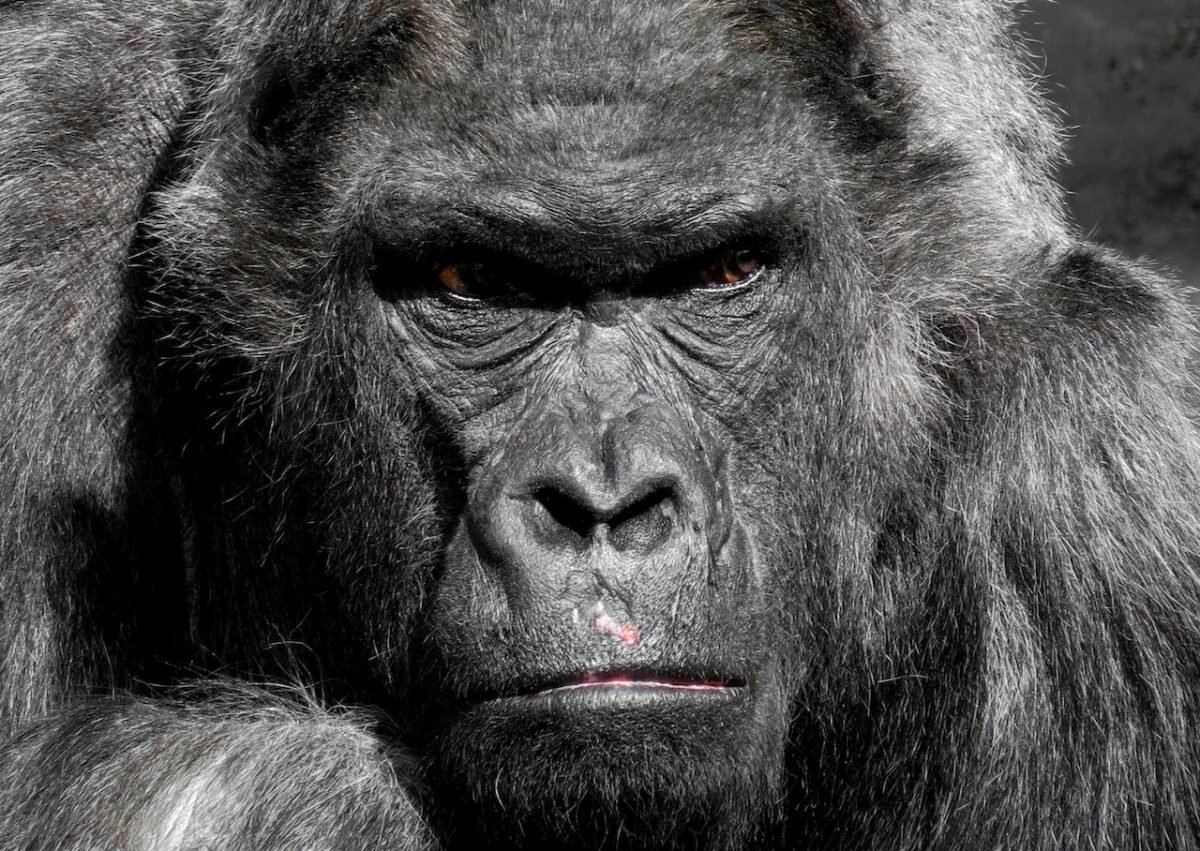
- Size: Silverbacks are the largest gorillas in the troop, often weighing between 300 to 400 pounds and standing up to 5.6 feet tall.
- Coloration: Look for the distinctive swath of silver hair across their back and hips, which gives them their name. This feature develops when male gorillas reach maturity, typically around the age of 12.
- Musculature: Silverbacks have broad chests and muscular arms that are significantly more prominent than those of other gorillas in the troop.
- Behavior: Silverbacks are the decision-makers of the troop. They decide where the group will go for food and rest each day.
- Conflict Resolution: Silverbacks often intervene in disputes within the troop, acting as mediators to maintain peace.
- Protection: In the face of external threats, silverbacks are the protectors of the group. They will often position themselves between the threat and the rest of the troop.
- Mating Rights: Typically, only silverbacks mate with the females in the troop, which can also be an identifying factor.
Identifying the silverback in a troop of gorillas is relatively straightforward due to their distinctive physical characteristics. But if you’re unsure, taking note of their behavioral traits can also aid you identifying the silverback.
Behaviorally, silverbacks are the decision-makers and protectors of the troop. They decide the troop’s movements, mediate conflicts, and protect the group from threats. Their actions often display a sense of authority and control.
They are also the primary protectors of the group, courageously defending against external threats. Despite their formidable size and strength, silverbacks often display gentle and nurturing behavior, especially towards the young.
FAQs About Silverback Gorillas
Yes, a silverback gorilla is significantly stronger than a human. They are estimated to be about four to nine times stronger than an average human male.
A gorilla becomes a silverback when it’s a mature, dominant male, typically around the age of 12, and develops a swath of silver hair across its back.
Silverback gorillas are generally peaceful and reserved towards humans. However, they can be aggressive if they feel threatened or if their troop is in danger.
Silverback Gorilla Intervenes In Fight: Wrapping Up
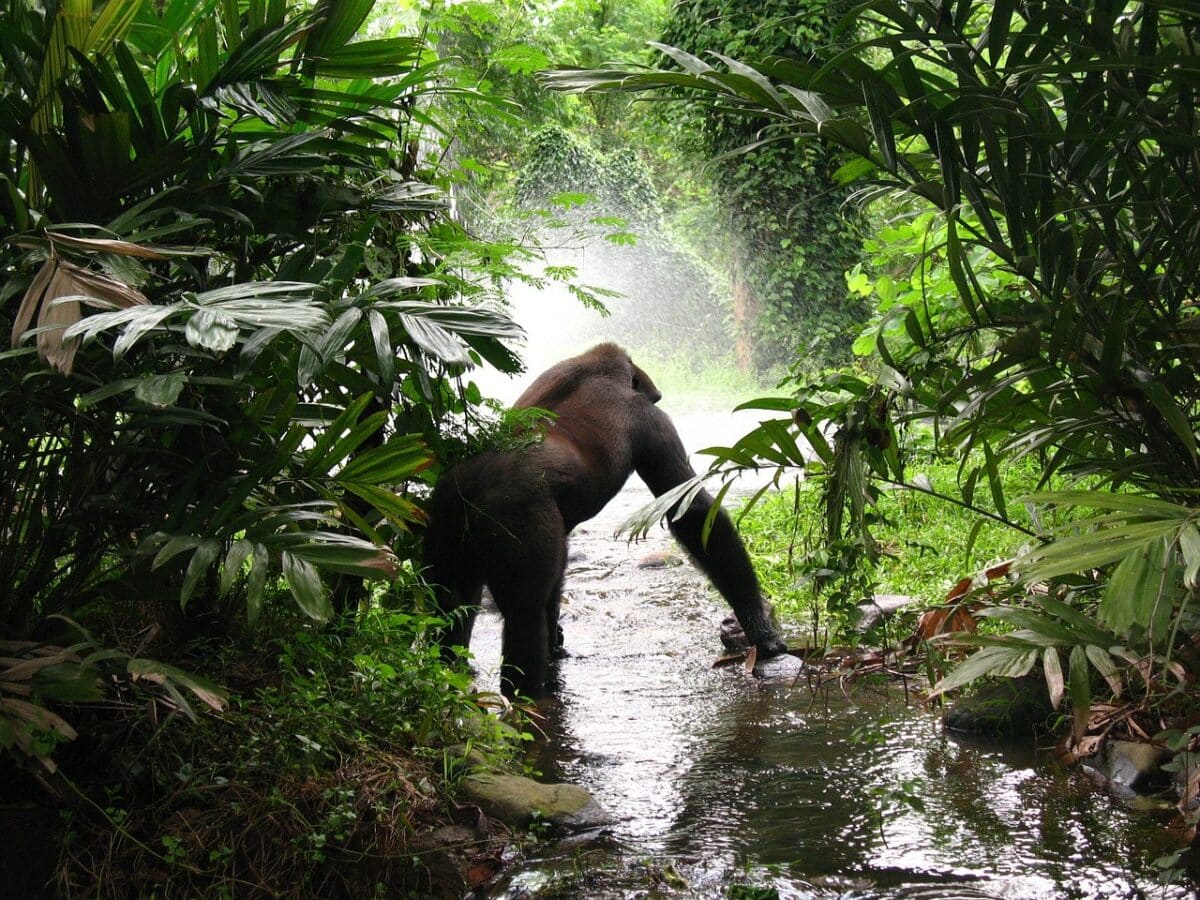
In conclusion, the video of the silverback gorilla, D’jeeco, intervening in a fight within his troop offers a vivid illustration of the crucial role silverbacks play in gorilla social structures.
D’jeeco’s swift and decisive action not only showcases his physical prowess but also his deep understanding of the social dynamics within his troop. His role as a mediator and protector mirrors leadership roles in human social structures. After all, there are remarkable similarities between us and these magnificent creatures. This understanding underscores the importance of respecting and preserving these complex social structures, which are integral to the survival and well-being of gorilla troops.
The Silverback’s intervention is a testament to their wisdom, strength, and their deep commitment to maintaining harmony within their groups.
Thank you for reading this article about the silverback gorilla that intervenes in a fight between his troop members! Keep reading with us:
- The Ultimate List of the Cast of Barbie’s Pets
- The Trend of Orcas Wearing Salmon Hats In the 80s
- How Kakapos (the Fattest Parrot In the World) Escaped Extinction
- Magpie Bird Is Reunited with Her Dog Best Friend - April 24, 2024
- Dog Saves Another Dog From Drowning in Fish Pond - April 23, 2024
- Man On Motorbike Rescues Cat From Highway - April 23, 2024

